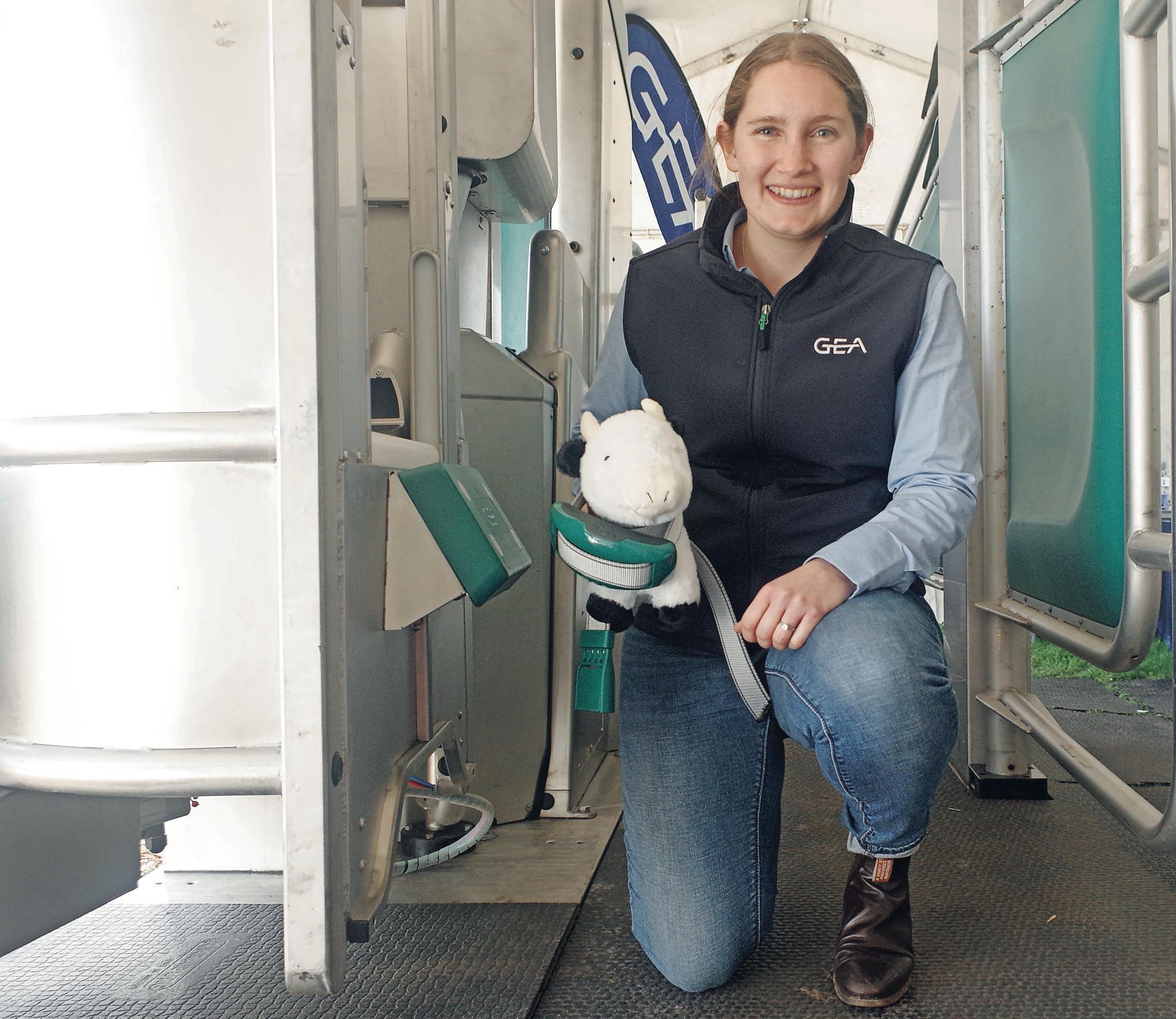






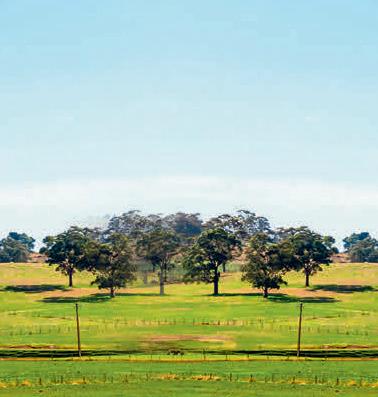
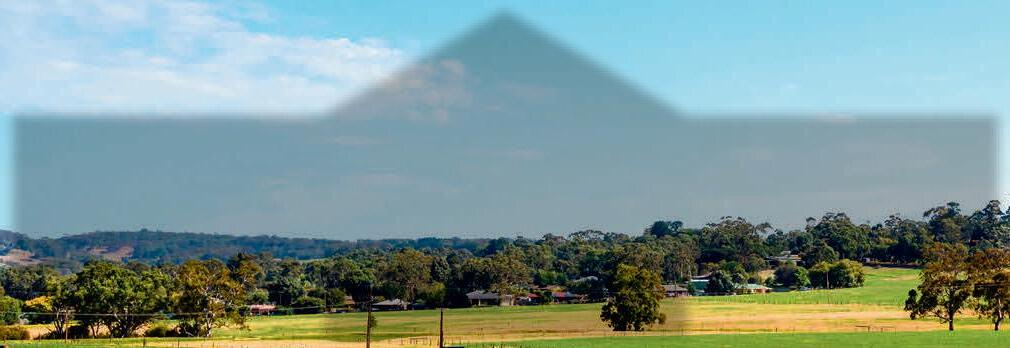
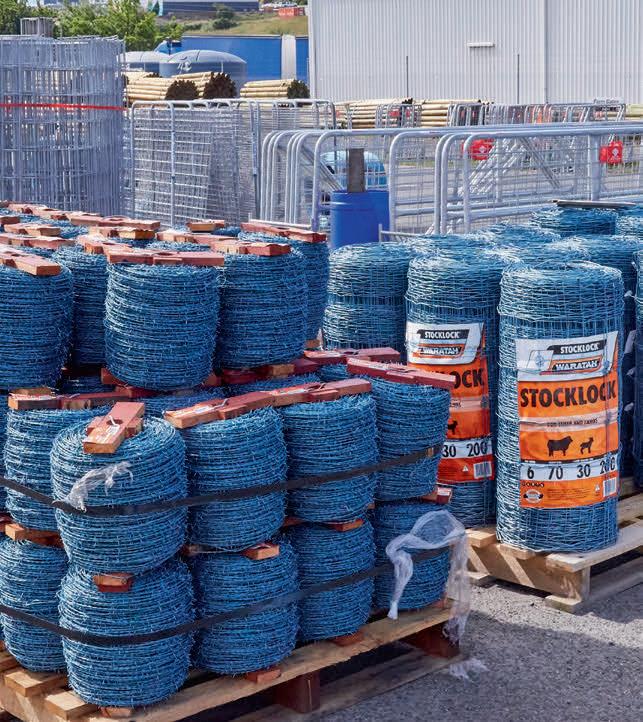



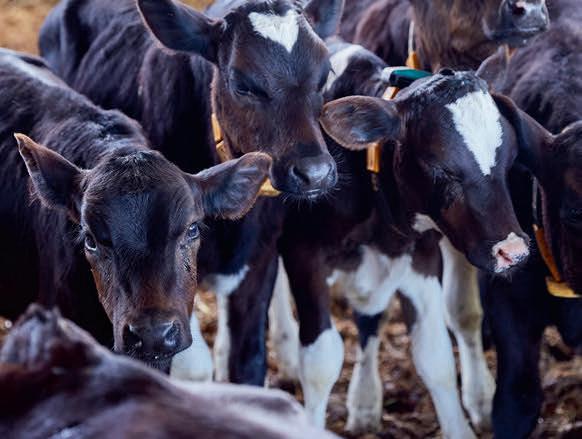
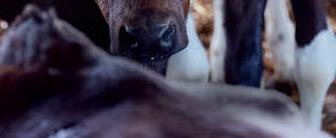
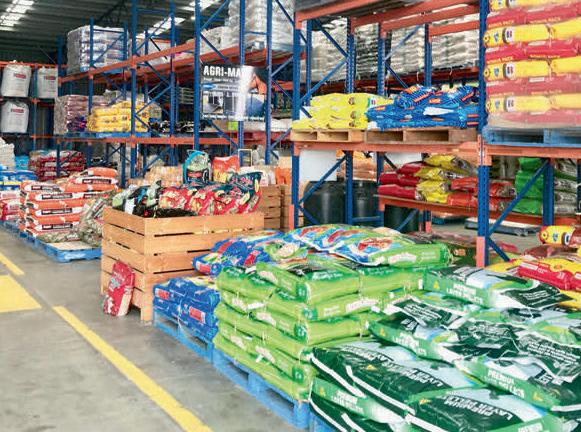
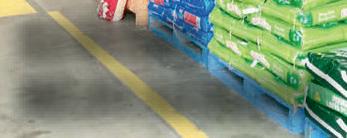
GIPPSLAND REGION OCTOBER, 2023 ISSUE 156 DAIRY SHOWCASE Kathryn Fox, of GEA Farm Technologies, was one of the many exhibitors at the South Gippsland Dairy and Farming Expo in early September. See pages 3 to 6 for stories and pictures from the event. ALL THINGS RURAL ...That’s what we do better! Bega Cobram Cohuna Colac Corryong Dumbalk Eskdale Finley Foster Heywood Kiewa Koroit Fuel available at these stores. VICTORIA & NSW STORE LOCATIONS - TRADING HOURS MON-FRI 8AM-5PM SAT 9AM -12PM. Times may vary - contact store. îs. 32519 Korumburra Leongatha Maffra Numurkah Orbost Rochester Simpson
FARM SUPPLIES PASTURE & CROP ANIMAL MANAGEMENT GENERAL MERCHANDISE AG Warehouse™ aims to support our customers in the areas of cropping, dairy, livestock, equine and lifestyle farming with the latest technologies and best products available in the market through our strategic vendor partners. Our team is experienced, knowledgeable and focused on servicing the farming needs of our customers. VISIT OUR WEBSITE agwarehouse.com.au
Swan Hill Wangaratta Warragul Wonthaggi Yarram
BY LAUREN FINGER
THIS IS my last column as chair of GippsDairy, as I will step down at the AGM in October having reached my term limit of nine years on the board.
When I first became a director in 2014, my youngest child was two years old and I was celebrating regained ‘independence’ after nearly six continuous years of being either pregnant, breastfeeding, or both.
It’s been quite a journey since then, and GippsDairy has supported farmers through tight times, dry times, and more recently, wet conditions, flooding, navigating a pandemic and labour shortages.
There’s been changes over the years in the size, leadership and staffing of our organisation, as well as what and how we deliver to farmers.
Nine years ago, having meetings or courses held online, watching webinars and listening to podcasts was rare.

Now, it’s made collaboration and learning across geographic boundaries possible, and opened up opportunities to those who can’t spare time to travel.
Events held in person offer a different experience, and we will continue to ensure a mix of both in our planning.
Some things haven’t changed, and one of these is the passion and enthusiasm of the GippsDairy team.
We have welcomed plenty of new faces in
nine years, and I am proud that a majority of those who have moved on from GippsDairy are still working within the dairy industry.
Learning through leadership Chair’s message
It’s a great industry to be part of and I’d like to thank Karen and the team for delivering so many great programs to us.
Another constant has been the quality of the GippsDairy Board.

GippsDairy is committed to lifelong learning and continuous improvement, and we offer governance training to all our directors.
The result is a board which is skilled, professional and diverse, and over the years I have enjoyed many healthy and respectful debates in the boardroom which have resulted in good decisions made with the long-term sustainability of GippsDairy in mind.
I leave the board with confidence that this will continue, and gratitude for the support and commitment of my fellow directors over my term as chair.
I have been fortunate to have many opportunities to learn, experience and observe leadership over the past decade.
The Gardiner Foundation has generously supported me to undertake the Gippsland Community Leadership Program, and later the Australian Rural Leadership Program, and I would commend both those opportunities to anyone who is interested.



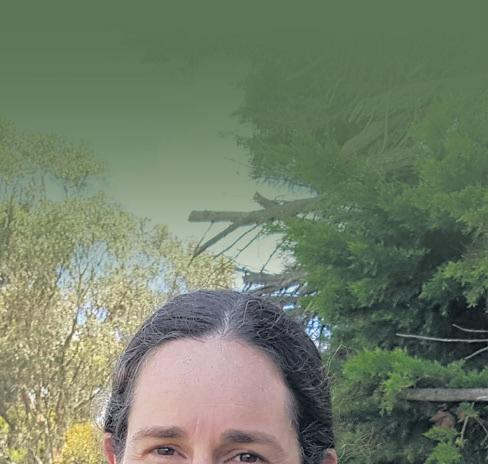
There has also been much to learn in my local community, and from parenting, which is perhaps the greatest leadership challenge of them all.
Leadership is a behaviour, not a title nor a position. Leadership is having the courage to speak up when something needs to be said, the discipline to turn up when something needs to be done, and the bravery to ask the question that everyone else is thinking.
One of my favourite quotes comes from Holocaust survivor Victor Frankl. “Everything can be taken from a man but one thing: the last of the human freedoms — to choose one’s attitude in any given set of circumstances.”
The most successful leadership I have observed comes from those who have the ability to first lead themselves.
They have the self-awareness to understand how their thoughts and behaviours impact others and the situation, the self-discipline to do what needs to be done, and the ability to regulate their emotions and actions.
These are all skills that are learned through practice.
I have no doubt that there will be more challenges ahead, for each of us personally, for GippsDairy and the dairy industry, and for society as a whole.
If each and every one of us shows leadership in our day-to-day lives, and practices gratitude and kindness, we will be a strong community to meet these challenges together.
I look forward to seeing you out and about in Gippsland.
Lauren Finger is the outgoing chair of GippsDairy.

2 // GIPPSLAND REGION DAIRY NEWS AUSTRALIA OCTOBER 2023
Crowds ock to dairy expo
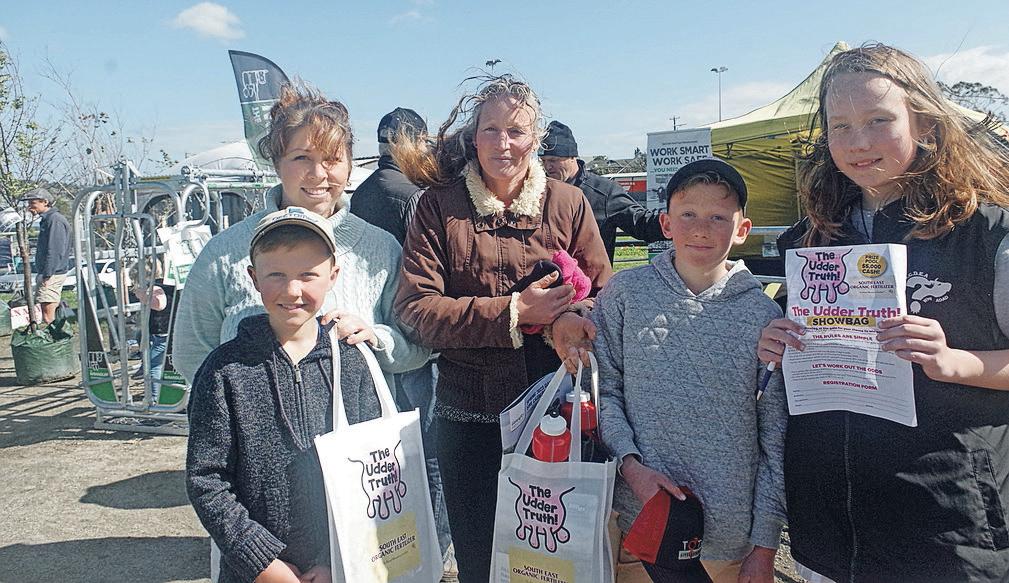 BY JEANETTE SEVERS
BY JEANETTE SEVERS
THE SOUTH Gippsland Dairy and Farming Expo has celebrated 22 years of showcasing the latest innovations and machinery for dairy farming.
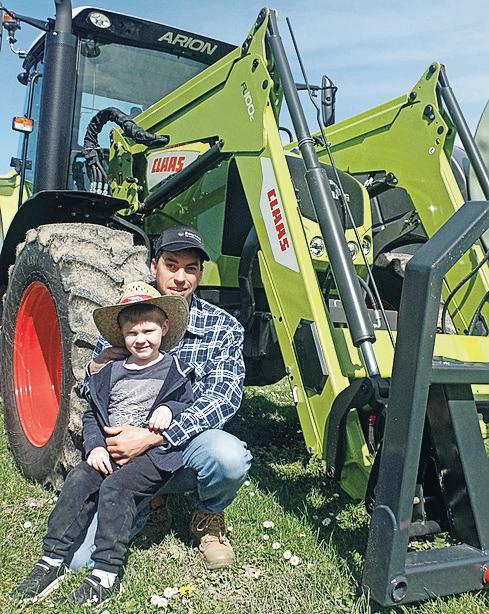
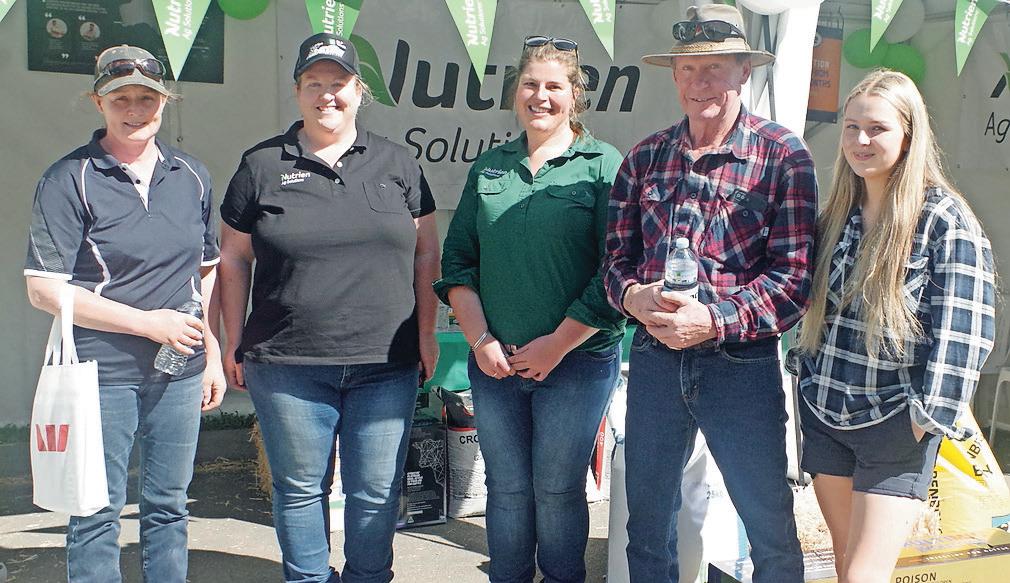

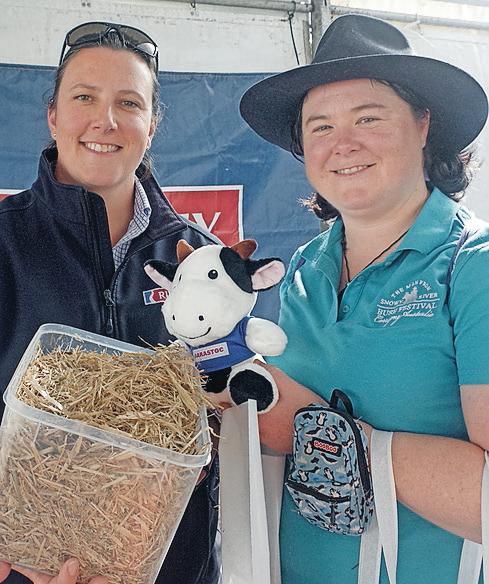
The expo was held at Korumburra Showgrounds on September 6 and 7.


The Strzelecki Lions Club organises and hosts the event, which includes industry events and the Gumboot Gift.
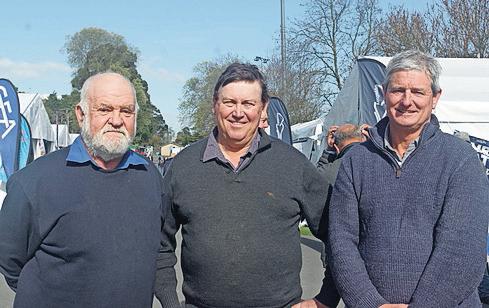
Lions Club secretary Deanne Kennedy
said 1225 people entered the event over the two days.
“This was about 200 more attendees than we’ve seen at recent years’ events,” she said. Exhibitor sites were in high demand, with many sites booked by July.
The Lions Club distributes the money raised through the expo to local schools, local reserves, childhood cancer, prostate cancer, ride for sight, hearing dogs, and elderly homes.
See more photos from the expo on page 4 and on the Dairy News Australia website at: www.dairynewsaustralia.com.au
Peter Fort, Burra Foods milk supply manager, and Sallie Jones, co-founder of Gippsland Jersey, were at the South Gippsland Dairy and Farming Expo, celebrating a seven-year relationship of supply. Burra Foods takes excess milk from Gippsland Jersey suppliers, an arrangement which Peter and Sallie said benefits both processors. The excess equates to an average 20 per cent of the milk from Gippsland Jersey suppliers.
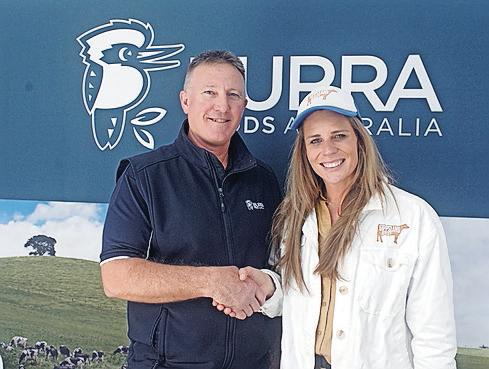
GPS Farm Mapping

Australian Mapping produces an accurate farm map to assist farmers in the management of their land and their business. An accurate farm map has many and varied uses including:


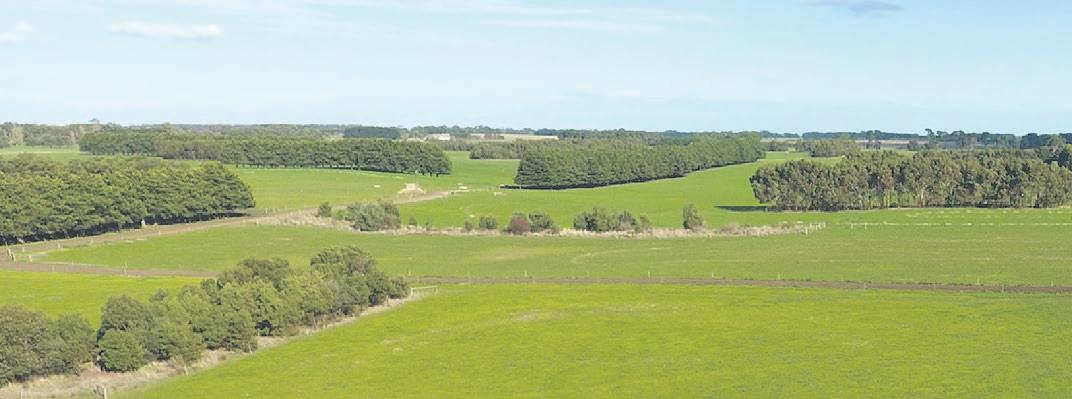
• Quality assurance purposes

• Whole farm planning
• Irrigation planning can help increase yields and save $$ by putting water only where needed





• Save on your inputs with accurate mapping for fertilizer and spray applications









Phone: 0429 171 685

• Whiteboards up to 1.2 × 2.4 metres available. 96572





www.australianmapping.com.au | email: sam.baulch@gmail.com


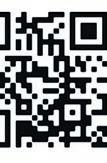
An easy to use app that allows you to map your farm and maintain your paddock and livestock records. Increase farm ef ciency, and reduce costly mistakes by giving your whole team access to the latest paddock and livestock records
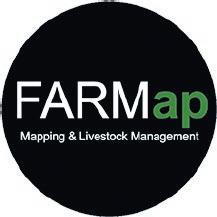
w: farmap.com.au
e: info@farmap.com.au
Jared Hick, of Hick Seeds, Torwood, and a mix of vetch, peas, oats and rye-grass.
In the Ridley Stockfeeds marquee was Caroline Brown with Rosie Colbert, a dairy farm worker at Yannathan.
Anthony Hyland, of Ag Farm Machinery, Warragul, with a Kioti tractor with bucket.
Terri Geary, from Nerrena, with Susie Evans and Sally Pate of Nutrien, and Fred Bentvelzen and Katie Geary, from Nerrena.
Cameron and Patrick Corrigan, from Krowera, with a CLAAS 430 Arion.
The Udder Truth showbag has been a highlight of the expo for many years. Stacey, Jack, Anneke, Johan and Hann Reesink were taking time off their dairy farms to attend the expo.
GIPPSLAND REGION // 3 DAIRY NEWS AUSTRALIA OCTOBER 2023
Stephen Kent from Lang Lang, Kelvin Jackson from Hazel Park and Grant Williams from Athlone.
Expo is a dairy showcase

WiSA - Proudly Australian owned & manufactured for 28 years
FARM & IRRIGATION AUTOMATION EXPERTS



Smarter irrigation for your farm
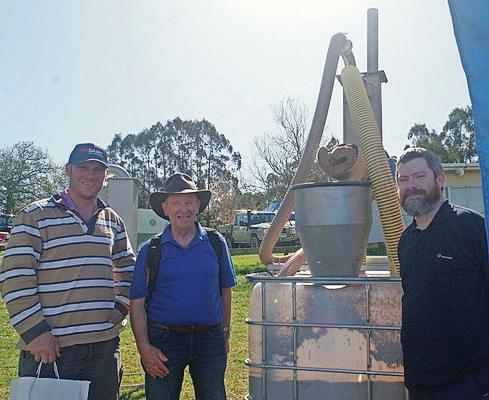
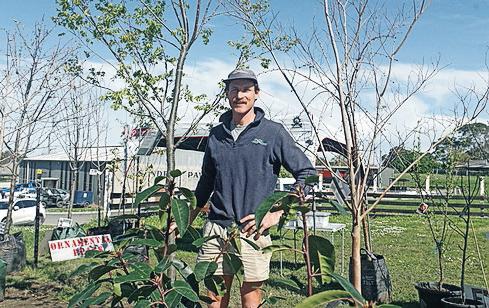
• WiSA’s automated irrigation system can deliver water when required and on time
• WiSA’s wireless solution means you have total control from your mobile phone or computer
• WiSA improves water use efficiency and can reduce labour costs
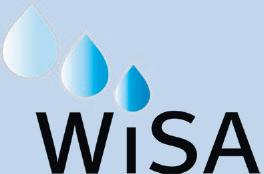
• WiSA’s automated irrigation system can improve the sustainability of your dairy farm, vineyard, orchards, and fields
Contact us:
Phone: 1300 887 380
Email: sales@irrigatewisa.com.au
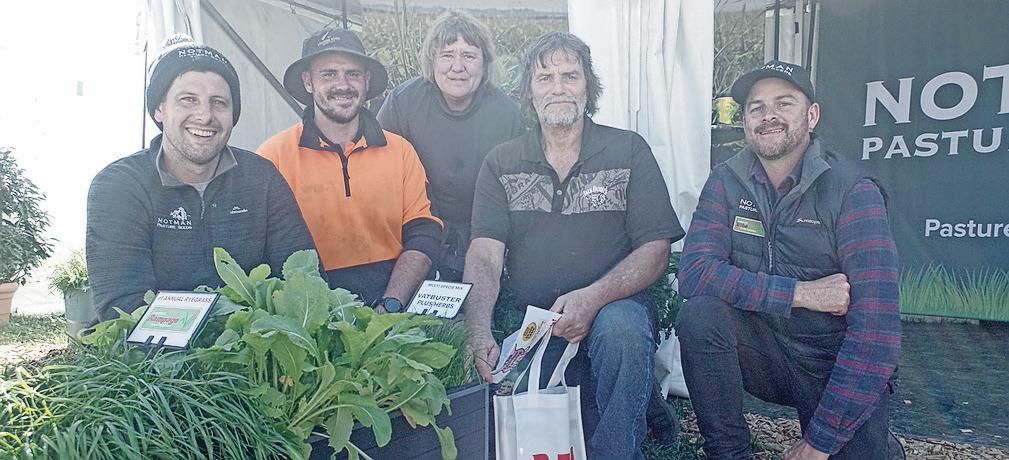

Web: www.irrigatewisa.com.au
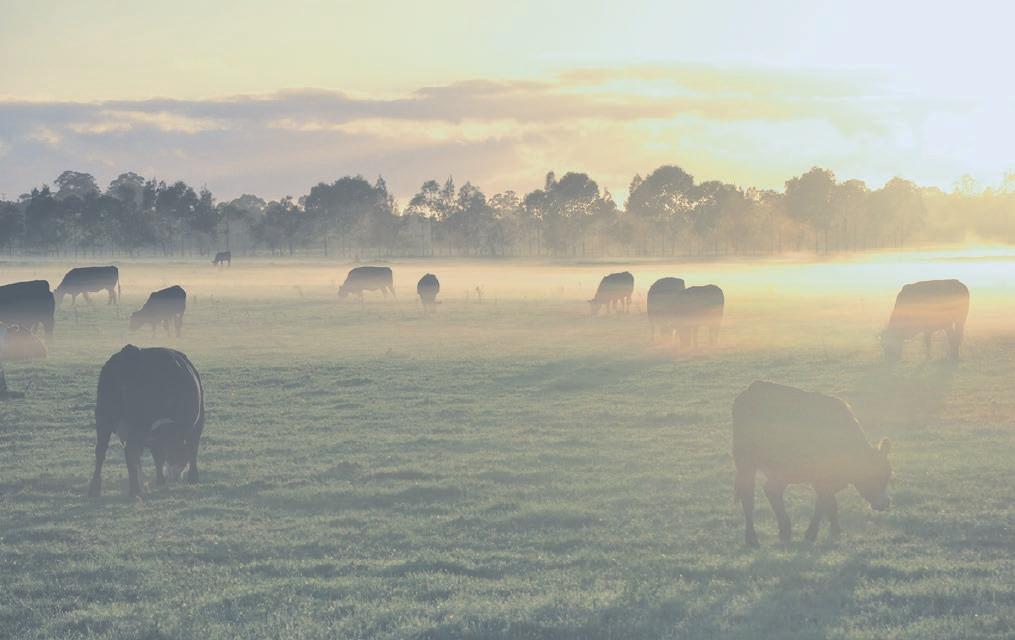 Chris Dunne, of Urban Tree Growers, with ornamental and deciduous trees, at the South Gippsland Dairy and Farming Expo.
Merryn and Tate Chapman, from Kernot, with Justine, Charlie, Claire and Megan Varlow, from Outtrim.
Selwyn Whitsed and Meaghan Johnston were giving away Bega dairy products.
Chris and Don Peters, from Korumburra, with Jeff Birrell, of WAM/Saveco, and the solid liquid separator.
Brandon and Kate Martelli, Meeniyan, with Rabobank’s Alex Bennett and Craig Hoober.
Talking grass at the Notman’s Seeds marquee were Jason Hibbs, Tim, Cheryl and Simon Coster, from Cloverlea, and Adam Fisher, pictured with multispecies pasture varieties.
Jenny and Graeme Cope, from Leongatha South, with Scott Price, of Westpac Agribusiness.
Chris Dunne, of Urban Tree Growers, with ornamental and deciduous trees, at the South Gippsland Dairy and Farming Expo.
Merryn and Tate Chapman, from Kernot, with Justine, Charlie, Claire and Megan Varlow, from Outtrim.
Selwyn Whitsed and Meaghan Johnston were giving away Bega dairy products.
Chris and Don Peters, from Korumburra, with Jeff Birrell, of WAM/Saveco, and the solid liquid separator.
Brandon and Kate Martelli, Meeniyan, with Rabobank’s Alex Bennett and Craig Hoober.
Talking grass at the Notman’s Seeds marquee were Jason Hibbs, Tim, Cheryl and Simon Coster, from Cloverlea, and Adam Fisher, pictured with multispecies pasture varieties.
Jenny and Graeme Cope, from Leongatha South, with Scott Price, of Westpac Agribusiness.
4 // GIPPSLAND REGION DAIRY NEWS AUSTRALIA OCTOBER 2023 88612
Vaughan Campbell, from Yannathan (centre), was looking at the ATVs, side-by-sides and motorcycles displayed by Phil Wilkinson and Rod Hine of AgMoto Pakenham.
Dairy farmers discuss dairy
BY JEANETTE SEVERS
THE FARMER panel is a highlight each year at the South Gippsland Dairy and Farming Expo, held at Korumburra.

Facilitated by farm consultant Matt Harms, it always features a selection of dairy farmers and industry people from the surrounding community.
This year’s panel presentation, on September 6, featured generational, new and retired dairy farmers.
Luke Wallace, of Poowong North, is a generational farmer, and owns a stud and commercial dairy herd.
Faced with the need to make change, they invested in infrastructure and moved from milking in a herringbone dairy to automatic milking systems. He values the AMS for its capacity to generate income as an standalone asset.
“They can be sold independently of the farm,” Luke said.
Nick Leppin, of Wattlebank, was a generational dairy farmer who recently retired from dairying and is now a beef farmer.
Matt Colwill, originally from the United Kingdom and now at Nerrena, was a dairy farmer in two countries.
In Australia, he and his wife were sharefarmers with a leased herd, progressed to property ownership, before selling the farm in 2019. Matt now works within the dairy service industry.
The general consensus from the panel was there was optimism and confidence in the ability to build wealth through dairy farming; particularly in a high rainfall area that favours pasture-based dairy systems, like South Gippsland.
“Dairy is a capital intensive industry,” Matt Harms said.
Some of the considerations were about knowing when and how much to invest to justify business and asset expansion — decisions about the herd, land, or infrastructure.
“At the time of buying the farm in Australia, we had only 30 per cent equity,” Matt Colville said.
“We couldn’t afford to employ a worker and the milk price was a flat line. But we worked hard.
“Eventually we had to make a decision about buying more land, expanding the size of our herd, and investing in infrastructure — or exit the industry.
“There’s a fine line between the decision to over-capitalise in an industry — investing in assets and infrastructure — versus pulling back.
“We chose to exit the industry.”
David and Linda Brumby, of Leongatha, are new to dairy farming, and arrived in the industry after many years working in the corporate world.
They have found the dairy industry to be a capital intensive industry.
“It requires buckets of money,” David said.
“The dairy industry challenges the labour model of progressing from farm worker to sharefarmer to owner of a farm.
“That’s the traditional model, but with land prices so expensive now, farming is much more difficult.”
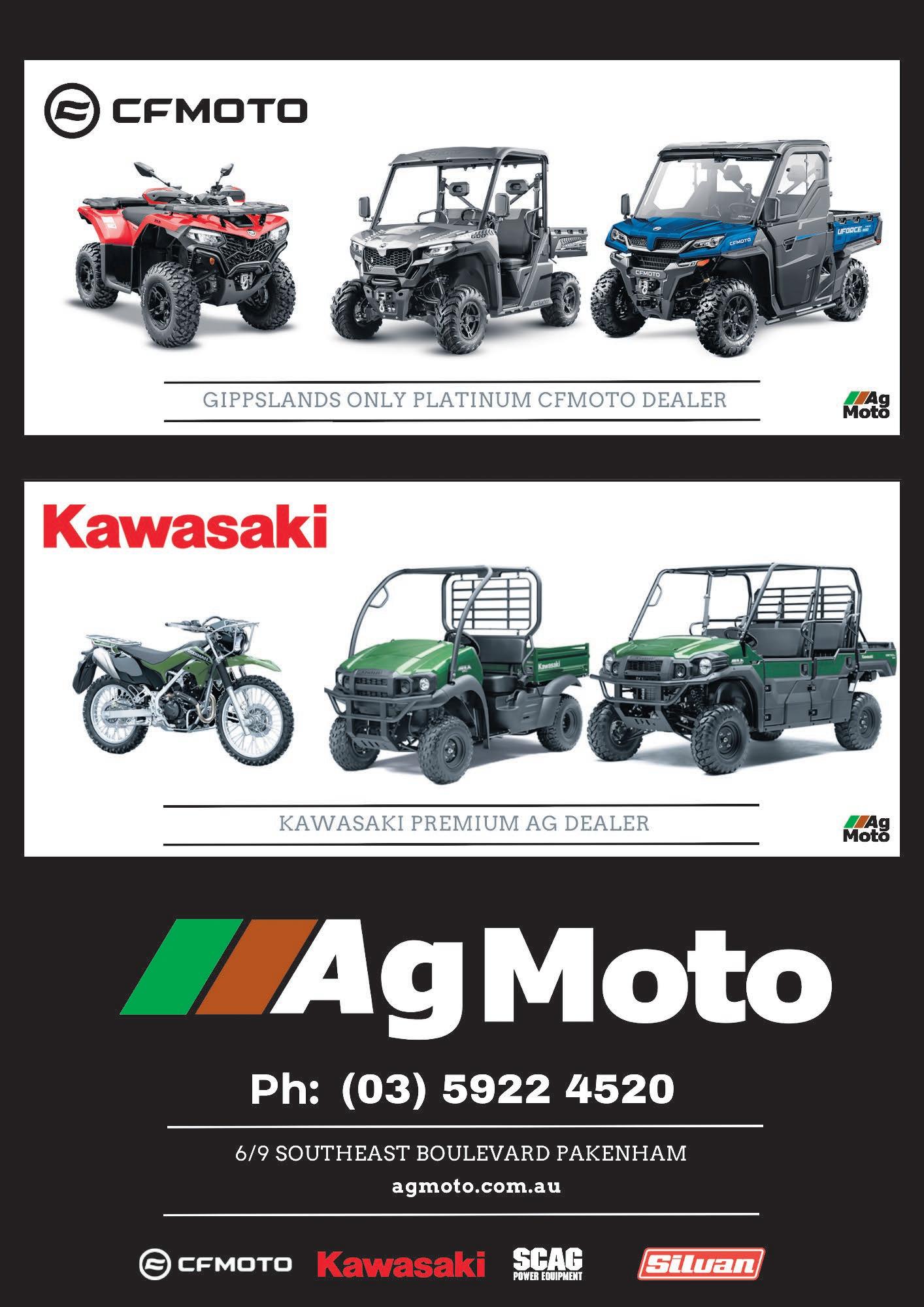
The couple is focused on building a comfortable income from the dairy farm, understanding that dairy farming is a key industry providing food security to Australia’s northern neighbours. Their challenge in achieving this role, is workforce.
“I have never worked so hard in my life,” Linda said.
“My view is that we need to pay more to attract and retain skilled workers in agriculture,” David said.
Mark and Trish Hammond, of Labertouche, are a mix of generational (Mark) and new (Trish) dairy farmers and lease two dairy farms, milking their own herd of 1100 cows. They recently purchased a 121-hectare turnout block.

Mark had a dream to own a farm, but he and Trish had to reconsider their future in the aftermath of the 2009 bushfires.
Property was burnt surrounding the dairy farm they were leasing. Another dairy farm close by became available to lease, so they changed their business plan to accommodate two leased properties and bought 700 more cows.
“We paid for those cows within two years,” Mark said.
“The scale of what we were doing helped to pay down debt,” Trish said.
They have since taken on a sharefarm, which was sold after a couple of years, and they have reduced their herd size.
Trish keeps a meticulous record of expenses and forecast expenses, and the couple regularly discuss their business plan together and with their landlords.
“So when a red flag comes up, eg, someone needs to invest in new cups, we justify why or if that’s a worthwhile investment, and leave it to the owners to make the decision,” she said.
The couple invests in ongoing maintenance that makes a difference in their working conditions.
They currently have a five-year plan to eliminate the debt on their turnout block, then build their family home on it.
Farmer speakers at the annual panel at the South Gippsland Dairy and Farming Expo were Nick Lepping, Matt Colwill, Luke Wallace, Matt Harms, Linda and David Brumby, and Trish and Mark Hammond.
GIPPSLAND REGION // 5 DAIRY NEWS AUSTRALIA OCTOBER 2023
In the Dairy Australia marquee, Bella Ingram and Jess Russell were looking after Tessie, Bailey, Squeek 1 and Squeek 2.
Races run, gumboots and all
BY JEANETTE SEVERS
THERE WAS a bigger field of competitors than recent years in the annual Gumboot Gift, held at the South Gippsland Dairy and Farming Expo this year.
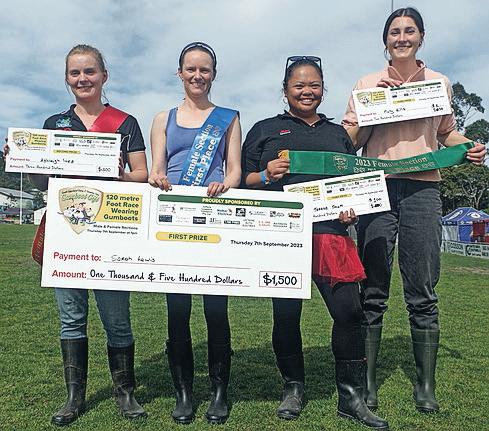

The expo is held at the Korumburra Showgrounds, and the gift is raced on the football oval within it.
There are three events in the gift, which is a handicap race run over 120 metres — men’s, women’s and veterans’. This year there were 13 entrants in the men’s, 15 entrants in the women’s and seven in the veterans’. Competitors were local and from further afield.
The gift has a total prize pool of $4000, spread across the men’s and women’s races.
The handicap is based on age, with backmarkers aged 18 to 30 years starting on scratch. Progressing by eight metres per decade of age, athletes aged 70-plus begin the race at the 80m mark.
In the early morning, the track was rated heavy, but upgraded to fast by late morning.
In the men’s race, from a field of 13 athletes, Craig Rollinson of Gainsborough finished first for the second year in a row.
He was followed by Rob Allen from Wattle Bank into second place. Martin Lamers from Outtrim took out third place.
Last year, Craig donated back $500 from his winnings, in return for the novelty cheque.
“I wanted to keep it and put the novelty
GippsDairy Annual Farmer and Industry Dinner
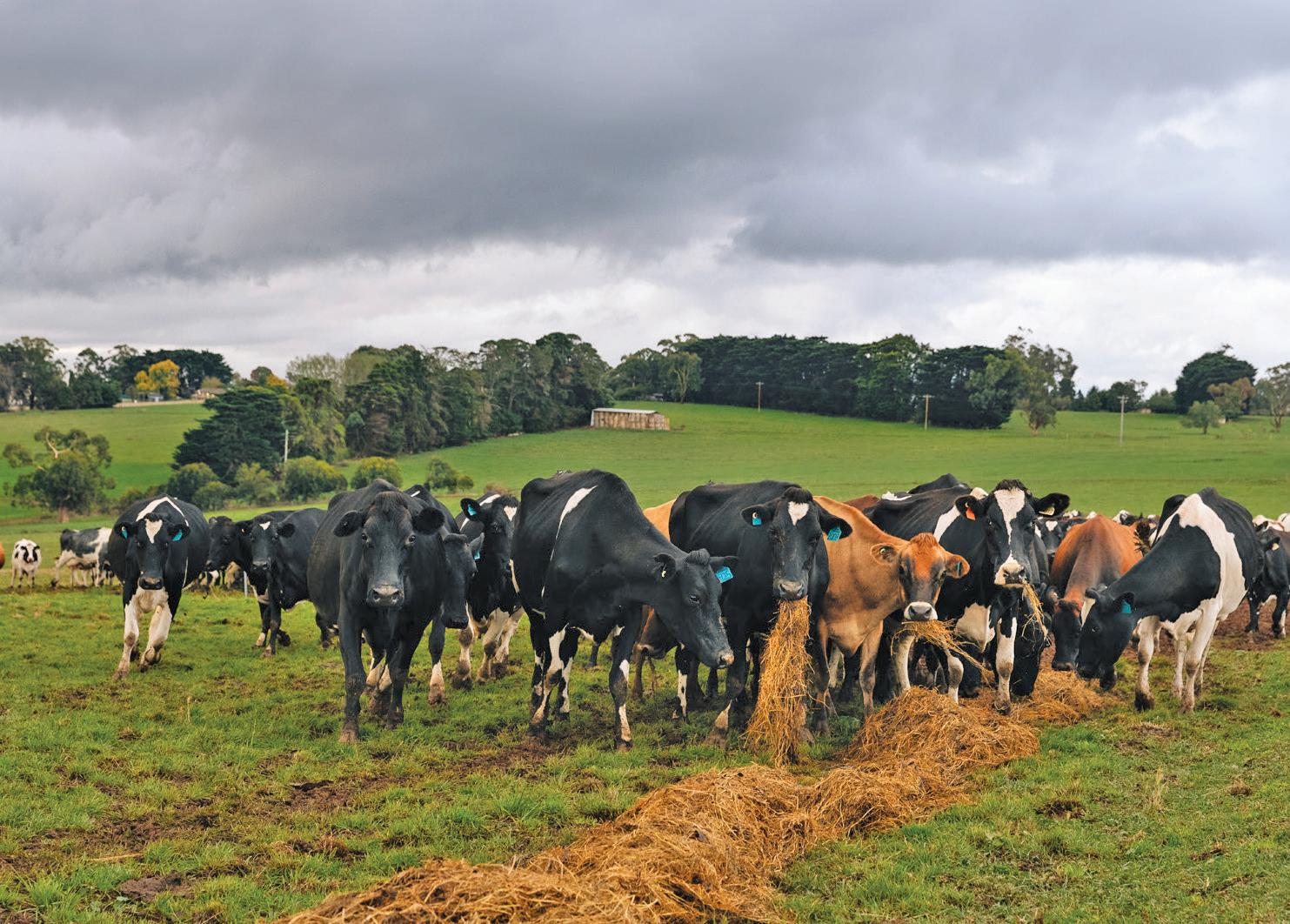
Join us for the GippsDairy Annual Farmer and Industry Dinner, an event celebrating the hard work and achievements of our local farmers and industry professionals.
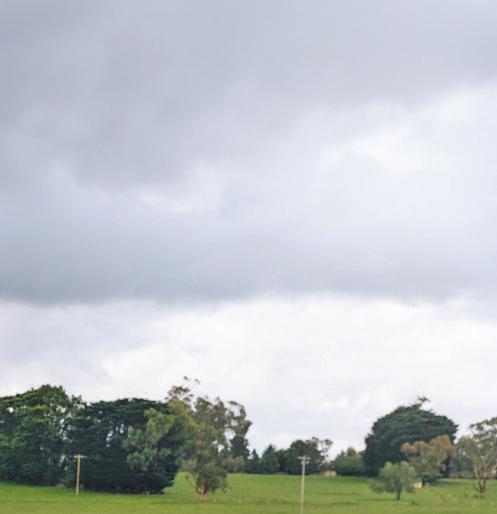
Thursday 19 October at 6:30pm
Astral Hotel, 34 Bridge Street, Korumburra
RSVP: Essential for catering purposes. Scan the QR code to secure your ticket. Please note numbers are strictly limited so register early.
cheque on my wall, so we came to an arrangement,” he said, referring to the Strzelecki Lions Club which organises the race.
Craig is well-known locally as a footballer and athlete, and has competed in some of Australia’s most prestigious sprint races in Victoria and South Australia.
This year he was a semi-finalist in the 200m race at the Stawell Gift and has competed in the Stawell Gift itself.

He won the 300m masters race at the Maryborough Gift in 2020, and has raced unplaced in the Maryborough Gift. He won the 2011 Rye Gift.
“I regularly get through the heats to compete in the finals of gift races in Victoria,” Craig said.
“The Gumboot Gift is a bit of fun and I know a lot of the organisers and they talked me into racing last year and this year.
“I just try to finish the race and not slip over at the start and not lose a gumboot during the race.”
In the women’s race, Sarah Lewis from Leongatha won for the second year in a row.
Ashleigh Ives from Tonimbuk raced into second place, also for the second year in a row. Third place was a tie between Theresa Scott from Cranbourne and Molly Ellis, who travelled from Benalla to compete.
The Lions veterans’ race was strongly contested, and Frank Hirst from Strzelecki, still wearing his hat, raced across the finish line into first place. Phillip Ould from Loch finished in second place, with Russell Jones from Nyora in third place.
Gippsland Women in Dairy Ladies Lunch
All dairying women across Gippsland, you are invited to leave the farm and network with like-minded individuals, hear from our keynote speaker, and go in the draw to win some great prizes.
Thursday 23 November, 10:30am-2:00pm
Narkoojee Winery and Restaurant, 220 Francis Road, Glengarry North
RSVP: Essential for catering purposes. Scan the QR code to secure your ticket. Please note numbers are strictly limited so register early.

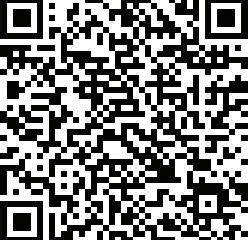 The men’s Gumboot Gift: Rob Allen (2nd), Craig Rollinson (1st) and Martin Lamers (3rd).
The women’s Gumboot Gift: Ashleigh Ives (2nd), Sarah Lewis (1st) and equal third, Theresa Scott and Molly Ellis.
The men’s Gumboot Gift: Rob Allen (2nd), Craig Rollinson (1st) and Martin Lamers (3rd).
The women’s Gumboot Gift: Ashleigh Ives (2nd), Sarah Lewis (1st) and equal third, Theresa Scott and Molly Ellis.
6 // GIPPSLAND REGION DAIRY NEWS AUSTRALIA OCTOBER 2023
The Lions veterans’ Gumboot Gift: Phillip Ould (2nd), Frank Hirst (1st) and Russell Jones (3rd).
Improve water systems
FUNDING OF up to $20,000 is now available to improve irrigation efficiency on farms across West Gippsland, with all farmers encouraged to apply.
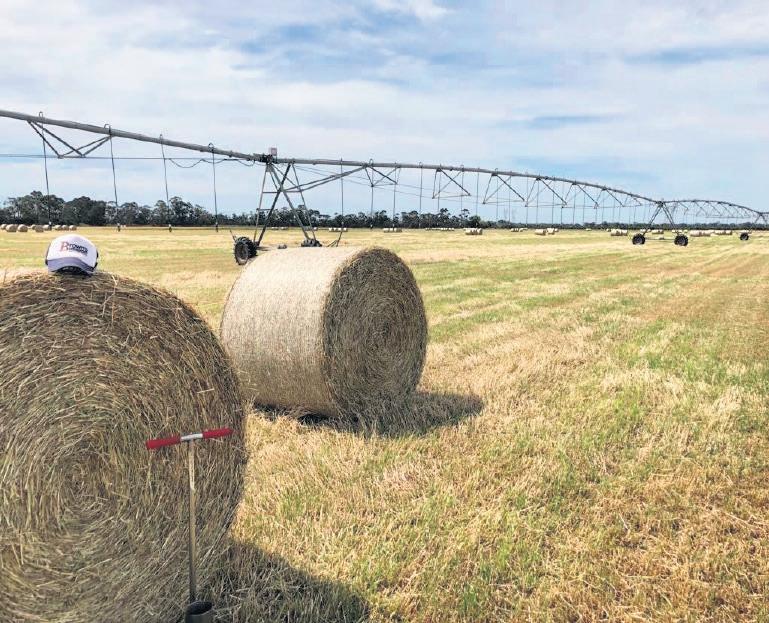



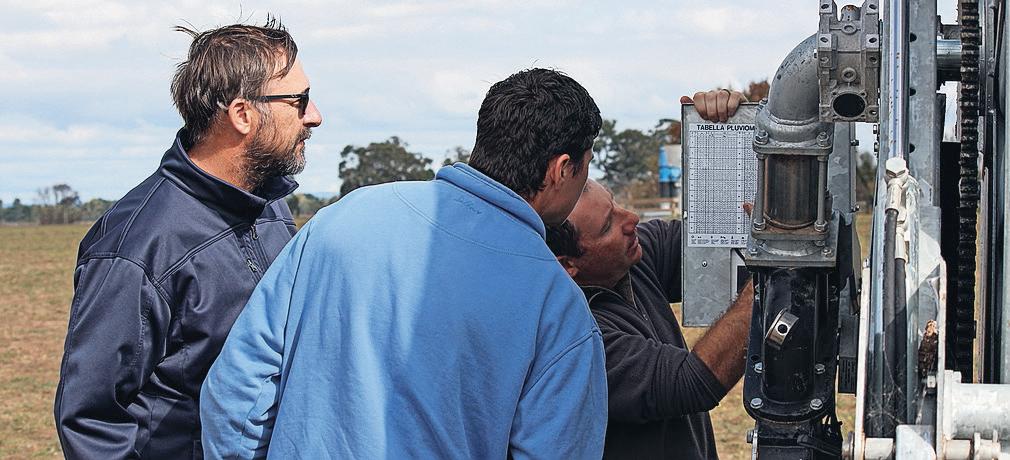
The grants, provided by the Victorian Government’s Sustainable Irrigation Program, are available for:



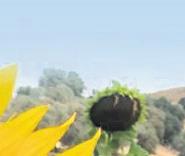


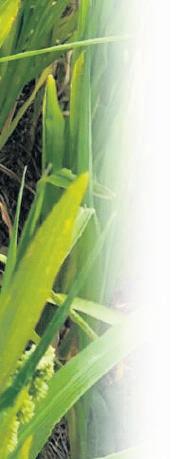
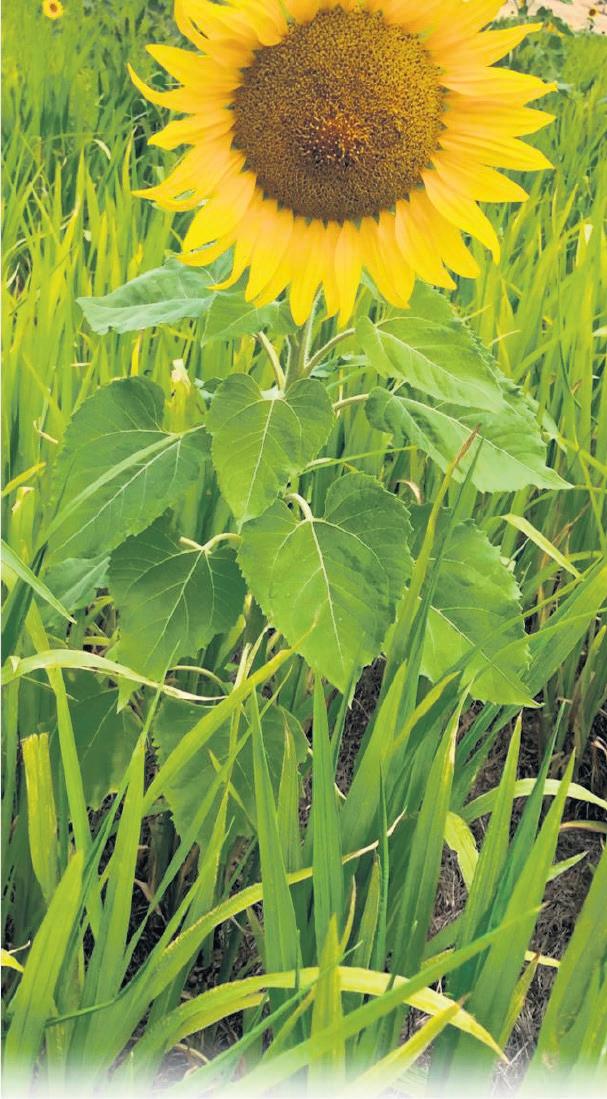
Re-use systems to capture water running off flood irrigated bays that would have previously left the property. The maximum size is 1 Ml for every 10 ha of catchment. Incentives of $400/ha an assist with the cost of constructing your re-use including permits, earthworks, materials, power installation and a permanent pump and motor including shed/concrete. Best practice surface irrigation to provide consistent and stable flow rates and now includes river and groundwater diverters. The incentive of $200/ha can assist with reconfiguring irrigation layout, upgrades to existing re-use systems, farm channels and bay outlets to improve flow rates and automation infrastructure (for example, timers). Pressurised (spray) irrigation conversion from flood irrigation to pressurised irrigation as a way of saving water on more permeable soil types. The $600/ha incentive can assist with the cost of the supply and installation of the pressurised system such as permits, materials, and electricity connection.
Denison dairy farmer Mat Warren milks 2000 cows at two family operated dairies and is a previous incentive recipient.
“We put our hand up for flood spray conversion. The difference it makes is the labour saving and time,” Mat said.
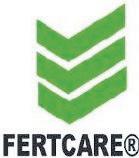
“I can have 10 pivots running at night and be in bed sleeping — it’s just made the job a lot easier.”
West Gippsland Catchment Management


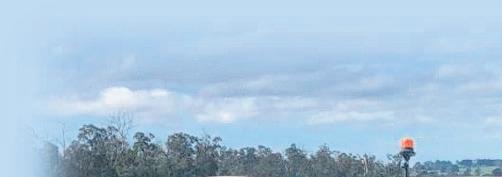
Authority sustainable agriculture project officer Brad Missen said there were real benefits to gain from these incentives, and recent changes also value-add.
“They include water, time, labour and cost savings along with wins for the environment such as reducing nutrient loss and groundwater infiltration,” Brad said.
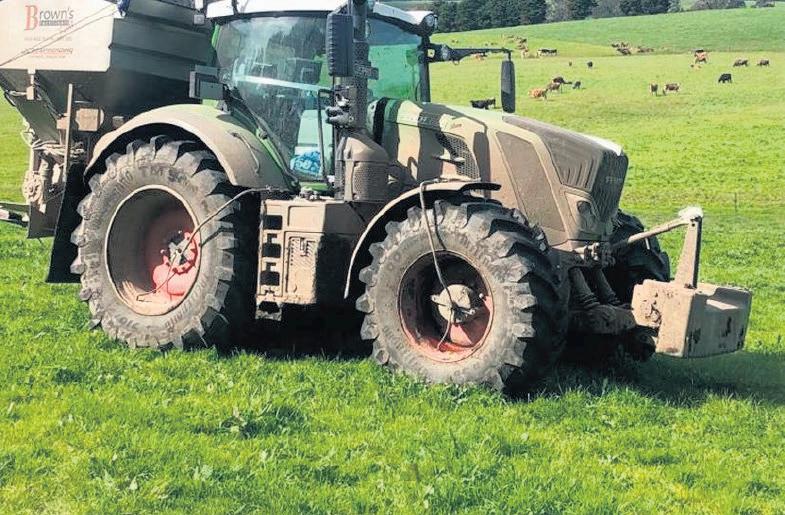
“We know all farmers are extremely busy and I just encourage you to give us a call and we can help you to maximise the great opportunities available through this program.”
If you are interested in being involved, contact Brad Missen CMA at bmissen@wgcma.vic. gov.au or irrigation extension officer Caelan McIntosh on 0476 885 716 or caelan.mcintosh@ agriculture.vic.gov.au
For more information, go to:https://wgcma. vic.gov.au/irrigation-incentives-save-watermoney-labour/
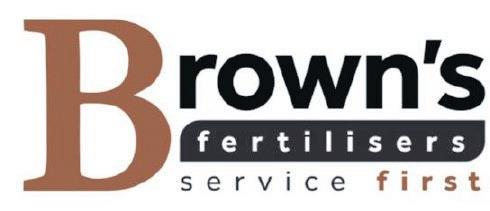 Brad Missen form West Gippsland CMA looks at operations at Andre Meyer’s dairy farm at Tinamba.
Photo: Gerard Callinan
Funding is available to improve irrigation efficiency on farms such as this dairy farm in the Macalister Irrigation District.
Brad Missen form West Gippsland CMA looks at operations at Andre Meyer’s dairy farm at Tinamba.
Photo: Gerard Callinan
Funding is available to improve irrigation efficiency on farms such as this dairy farm in the Macalister Irrigation District.
GIPPSLAND REGION // 7 DAIRY NEWS AUSTRALIA OCTOBER 2023 PRODUCTS • Fullrangeof granular fer liser • Full rangeof natural lime • Traceelements • Organicproducts • Bulka& 25kg bags Speak to your local agronomist today to findout howwecan help you! SERVICES • Agronomic advice • Spreading • Fieldbins • Blending • Soil &plant ssue tes ng • Nutrient budge ng KooWeeRup (03) 59972203 AlexanderMapleson 0409406234 JessicaAshburner 0408 082 036 TimManders 0417972200 Leongatha Maffra Merton (03) 56673100 JohnBowman 0447873888 LauraHunt PeterHowie JackWoods 0427220127 0409383529 0400 930 325 SalesManager –Sco ohnstone 0487052434 Find out more: www.brownsfert.com.au 96586
Photo: Craig Moodie
Robots save time and pain
BY JEANETTE SEVERS
THE PRINCIPALS of Wallacedale Jerseys were recently named among the inaugural group of Jersey Australia Master Breeders.
Luke and Mel Wallace are no longer milking cows, since they installed two automatic milking systems — or robots — on their dairy farm.
And a third AMS will be installed sooner rather than later, Mel said.
The journey to installing AMS has taken a lot of reflection to accomplish.
The herd of 160-170 cows grazes 78 hectares of steep country at Poowong North, with 36ha of lease country to raise young stock.
Another 20ha of leased country is used for harvesting fodder and running dry cows and young stock.
Cereal hay is bought in and fed out on the feedpad for the milking herd.
Luke was the main milker on the farm, milking twice a day seven-days-a-week, working alongside an employee who arrived for the morning shift six days a week.
“I was physically hurting, working every day in the herringbone dairy,” Luke said.
“I was in pain in my wrists and elbows from the repetitive action of milking and in my ankles, knees and hips from standing on concrete.”
The decision to invest in Lely Astronaut A5 milking systems was influenced by convenience.
“We went with Lely because there’s a big service team at Warragul, which is just down the road,” Mel said.
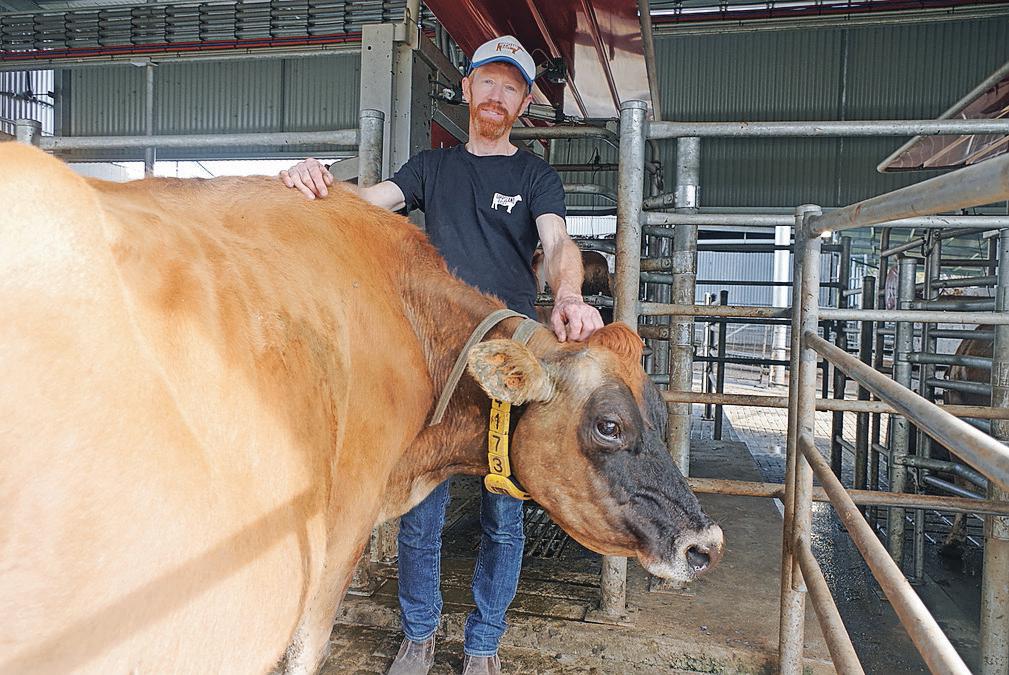
They had a new shed built, with three bays, and installed two AMS, which were commissioned and working from November 7, 2022.
“We had so much concrete going down that we decided we may as well build a bigger shed and have three bays built, for installing a future third robot milker,” Mel said.
“That third robot is likely to go in sooner rather than later.
“With two robots, 160 cows is our maximum number and it puts a lot of pressure on the system.
“After calving down this spring, we’ll have 170 cows going through it.”
The computerised system means a cow won’t be admitted to the milking area if there is less than six hours since she was last milked, or five hours if she is fresh-in-milk.
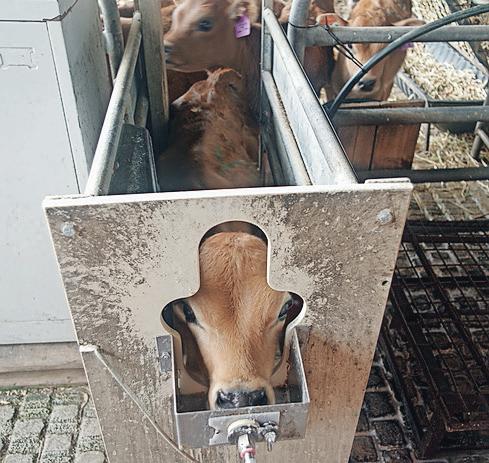
“Even for milking 160 cows, they won’t have to stand on concrete for as long if we have three robots,” Mel said.
“And if one of the robots is offline for maintenance, the herd will still be able to go through the other two.
“We can also use the third one to focus on training heifers.”
Because Luke and Mel have used automatic calf feeders for a few years, they noticed it is easier to train heifers to enter the AMS bays.
“In the automatic calf feeder, they are used to being enclosed to feed, so they don’t seem to be afraid to go into the robot,” Mel said.
The first four days using the AMS were extra challenging because of the weather conditions. It was November 2022 and a lot of rain had fallen, and was still falling, at Poowong North.
“We had to go on foot to collect the cows and heifers and bring them up,” Mel said.
“They didn’t like walking through the mud, and we didn’t like walking them through the mud.”
But Lely provided extra staff to help train the cattle, which helped Mel and Luke.
Luke and Mel had also transitioned the cows by putting up Texas gates and grazeways, including putting hay on the feed pad, to encourage the cows to walk through the new shed after they exited the herringbone dairy.
They also walked the cows through and fed them within the robot bays twice a day for a week, before start-up day.
It also helps the cows were used to being called into the dairy, so reconfiguring the entry setup was only a small thing for them to alter their behaviour.
After only a few days of encouragement, the cows were happily milking themselves.
For Luke, continuing to work as a dairy farmer was about identifying where his interests and passion lay.
That is in genetics, and breeding good Jersey
cows and bulls.
All heifers and cows at Wallacedale Jerseys are AI’d, with 30 per cent of joinings with sexed semen. Conventional Jersey semen is used for the remaining 65 per cent of the herd, and five per cent are joined with conventional beef semen.

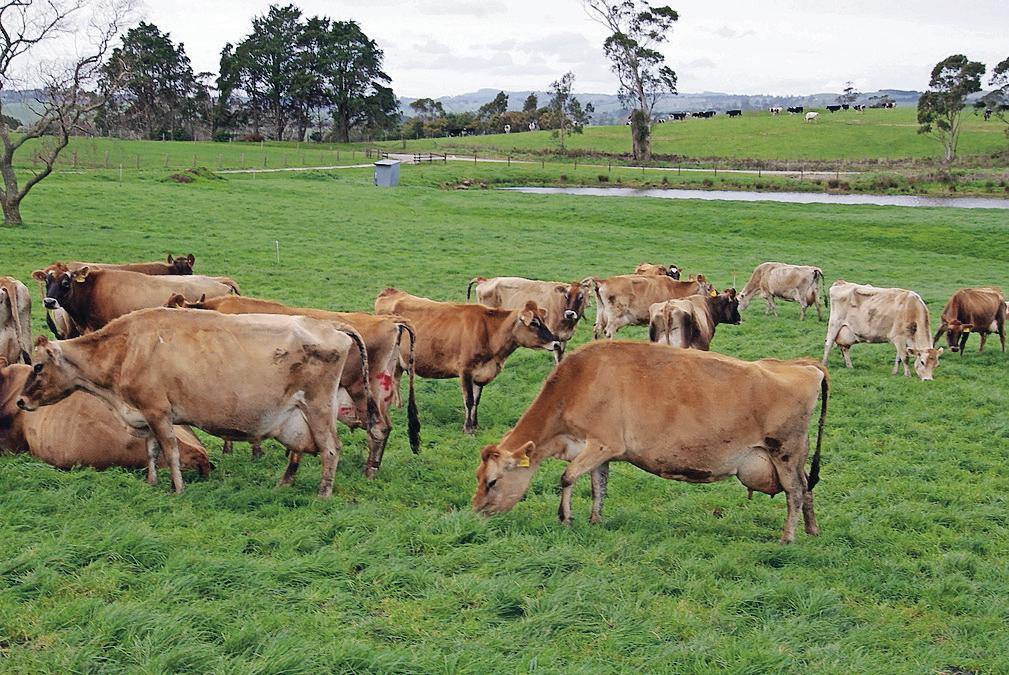
Jersey bulls follow AI with the heifers.
“We use sexed semen in the younger cows,” Luke said.
“We try to balance production and type traits as much as possible.”
Currently, Wallacedale Jerseys has three bulls standing with Genetics Australia, with semen exported to South Africa and New Zealand, and interest from Canada and the United States.
Wallacedale Jersey genetics are in high demand in Australia.
The herd ticks phenotype, production, polled, and A2/A2 targets.
“We always use some of our own bulls and some bulls that are outcross to our herd,” Luke said.
“Everything we breed is A2/A2.
“When we genomically test our heifer calves, we also test for A2.
“In our 2021 reduction sale, we sold almost every female that was not A2.”
A number of their cows are homozygous polled.
“We’re certainly trying to introduce the poll gene into our herd as much as possible, without trying to sacrifice other traits.
“At least 60 per cent of the calves in the shed this season are polled,” Luke said.
He and Mel are also conscious of animal welfare issues. They see horned cattle as a likely future animal welfare issue, which is only one of the reasons they prefer to breed polled Jerseys.
They raise male calves because they sell a lot of herd bulls, especially locally.
Using the AMS has improved other animal welfare issues.
“The cows don’t get teat end damage because the system is running on low vacuum,” Luke said.
“As a teat finishes being milked, the cup falls off, so they don’t get the teat damage of a conventional milking practice.
“Every time a cow is milked, you get information about every quarter — including the temperature, the colour of the milk and cell count.
“Sensors in the rubber picks up a hard spot or clot sooner than a person will.
“The sooner you can pick it up, the sooner you can treat her.
“The robot reduces the cost of treatment, minimises the risk of cross-contamination because the cups are sterilised between each cow.
“It also minimises the effect on production.”
Luke’s welfare is also improved in the short time since the AMS were installed.
His pain levels have reduced and he is spending more time with his family.
“Because he milked every day, he wasn’t able to have breakfast with us,” Mel said.
“Now he has breakfast with the kids before they go to school.
“We’re also able to do things off the farm, like spend two days talking to people at the South Gippsland Dairy Expo.”
Their farm worker has switched from milking to other farm work.
Luke said he checks the whiteboard for what jobs needed to be done and goes about his day independently.
Luke is able to concentrate on maintenance tasks about the farm, and on the health and breeding of his Jersey cattle.
Mel continues to raise the calves.
Luke Wallace says the automatic milking system is kinder to cows and humans.
Some of the 170-head Wallacedale Jerseys herd.
The cows choose to be milked in the automatic milking system.
8 // GIPPSLAND REGION DAIRY NEWS AUSTRALIA OCTOBER 2023
Luke and Mel Wallace noticed that using automatic calf feeders taught the heifers to be relaxed about being milked and fed in a robot dairy milker.
























 BY JEANETTE SEVERS
BY JEANETTE SEVERS







































 Chris Dunne, of Urban Tree Growers, with ornamental and deciduous trees, at the South Gippsland Dairy and Farming Expo.
Merryn and Tate Chapman, from Kernot, with Justine, Charlie, Claire and Megan Varlow, from Outtrim.
Selwyn Whitsed and Meaghan Johnston were giving away Bega dairy products.
Chris and Don Peters, from Korumburra, with Jeff Birrell, of WAM/Saveco, and the solid liquid separator.
Brandon and Kate Martelli, Meeniyan, with Rabobank’s Alex Bennett and Craig Hoober.
Talking grass at the Notman’s Seeds marquee were Jason Hibbs, Tim, Cheryl and Simon Coster, from Cloverlea, and Adam Fisher, pictured with multispecies pasture varieties.
Jenny and Graeme Cope, from Leongatha South, with Scott Price, of Westpac Agribusiness.
Chris Dunne, of Urban Tree Growers, with ornamental and deciduous trees, at the South Gippsland Dairy and Farming Expo.
Merryn and Tate Chapman, from Kernot, with Justine, Charlie, Claire and Megan Varlow, from Outtrim.
Selwyn Whitsed and Meaghan Johnston were giving away Bega dairy products.
Chris and Don Peters, from Korumburra, with Jeff Birrell, of WAM/Saveco, and the solid liquid separator.
Brandon and Kate Martelli, Meeniyan, with Rabobank’s Alex Bennett and Craig Hoober.
Talking grass at the Notman’s Seeds marquee were Jason Hibbs, Tim, Cheryl and Simon Coster, from Cloverlea, and Adam Fisher, pictured with multispecies pasture varieties.
Jenny and Graeme Cope, from Leongatha South, with Scott Price, of Westpac Agribusiness.









 The men’s Gumboot Gift: Rob Allen (2nd), Craig Rollinson (1st) and Martin Lamers (3rd).
The women’s Gumboot Gift: Ashleigh Ives (2nd), Sarah Lewis (1st) and equal third, Theresa Scott and Molly Ellis.
The men’s Gumboot Gift: Rob Allen (2nd), Craig Rollinson (1st) and Martin Lamers (3rd).
The women’s Gumboot Gift: Ashleigh Ives (2nd), Sarah Lewis (1st) and equal third, Theresa Scott and Molly Ellis.


















 Brad Missen form West Gippsland CMA looks at operations at Andre Meyer’s dairy farm at Tinamba.
Photo: Gerard Callinan
Funding is available to improve irrigation efficiency on farms such as this dairy farm in the Macalister Irrigation District.
Brad Missen form West Gippsland CMA looks at operations at Andre Meyer’s dairy farm at Tinamba.
Photo: Gerard Callinan
Funding is available to improve irrigation efficiency on farms such as this dairy farm in the Macalister Irrigation District.



